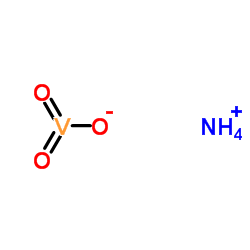Improved selective, simple, and contrast staining of acidophilic neurons with vanadium acid fuchsin.
I V Victorov, K Prass, U Dirnagl
Index: Brain Res. Brain Res. Protoc. 5(2) , 135-9, (2000)
Full Text: HTML
Abstract
Acidophilia is one of the hallmarks of acute neuronal damage and death in brain ischemia, excitotoxic and traumatic lesions and epileptic seizures. We here describe a novel and simple method for visualizing acidophilic neurons on paraffin sections, using vanadium acid fuchsin (VAF) staining and toluidine blue or hematoxylin counterstaining. Paraffin sections of the brain fixed in ethanol-formalin-acetic acid mixture are stained in 0.1% acid fuchsin containing 0.125% of ammonium metavanadate and 1% of glacial acetic acid, differentiated if overstained in 0.01% of borax solution, and counterstained with 0.05-0.025% of toluidine blue in acetate buffer (pH 3.3) or Gill's II hematoxylin. The sections are dehydrated, cleared in xylene and mounted in Canada balsam or any synthetic mounting media for light microscopy. VAF combined with toluidine blue or hematoxylin results in highly selective and reproducible color contrast staining of acidophilic neurons as well as glial nuclei and hyperchromatic neurons. As a progressive method, acid fuchsin staining usually does not require differentiation. The red acidophilic neurons are clearly visible on the background of non-damaged cells, which significantly facilitates the identification, and localization of damaged neurons, even at low magnification under the light microscope.
Related Compounds
| Structure | Name/CAS No. | Molecular Formula | Articles |
|---|---|---|---|
 |
Ammonium oxido(dioxo)vanadium
CAS:7803-55-6 |
H4NO3V |
|
Enhanced Photocatalytic Performance of the Graphene-V2O5 Nan...
2015-07-15 [ACS Appl. Mater. Interfaces 7 , 14905-11, (2015)] |
|
Degradation of 5-FU by means of advanced (photo)oxidation pr...
2015-09-15 [Sci. Total Environ. 527-528 , 232-45, (2015)] |
|
Genes required for and effects of alginate overproduction in...
2013-09-01 [J. Bacteriol. 195(18) , 4020-36, (2013)] |
|
Direct Production of 5-Hydroxymethylfurfural via Catalytic C...
2015-09-07 [ChemSusChem 8 , 2907-16, (2015)] |
|
Evaluation of changes in the element content and biomass of ...
2003-01-01 [Acta Biol. Hung. 54(3-4) , 373-84, (2003)] |